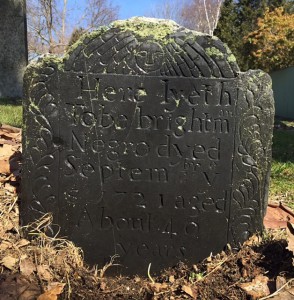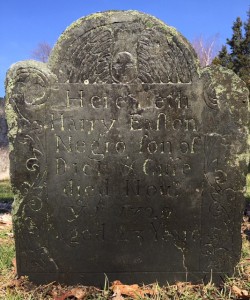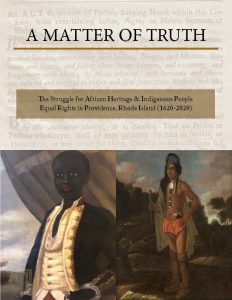Cemeteries are largely seen as final resting places – an end, but for those interested in historical and genealogical research, cemeteries can provide a wealth of information regarding people, places and events of the past.
Here in Newport, Rhode Island we have within the Common Burying Ground, one of America’s earliest public cemeteries, a section that dates back to at least 1705 that includes the final resting place of Colonial Era enslaved and free Africans. Over the years, historians have described the one-acre area, which the African American community would later call “God’s Little Acre” as the segregated section of a public cemetery reserved for non-whites. This logical conclusion arises from the many examples of historic “Negro” burial grounds throughout early America that were almost always sited far apart from the final resting places of the white community.
As we work to restore and interpret God’s Little Acre, we are continually reminded that the larger Common Burying Ground was established by a very special man and within a very special time and place in American history. The Common Burying Ground is a 10-acre parcel of land gifted to the Town of Newport in 1640 by Dr. John Clarke. Renaissance man Clarke, would become one of the founders of Newport, an early Baptist minister, and the man who would bring the Royal Charter of 1663 that would establish Rhode Island as an English Colony under the unique tenants of religious toleration and a separation of church and state. As Clarke would gift land for an establishment of a public burying ground, an important requirement was that all would be afforded the opportunity to be buried in a common place regardless of social or religious status.
As Newport would grow into a major American seaport during the 18th century, so too did its population of enslaved and free Africans, who, as they departed this life, would be buried in the God’s Little Acre section of the Common Burying Ground. The fact that
Africans, enslaved and free, buried in a separate section, but still within an ancient, historical burial ground with their own burial markers is unique and historically noteworthy. However, recent interpreted work has found several markers of enslaved and free Africans that were buried not only in the God’s Little Acre area, but within the larger cemetery resting peacefully beside their Colonial white contemporaries. This evidence of integrated burials during the 18th century offers the supposition that while the God’s Little Acre section of the Common Burying Ground was clearly designated as the final resting place for African members of the Newport community, it was not a strict requirement.
This evidence of integrated burials within an early American community, that also was the leading American Colonial slave port, offers a lesson in hope. Hope that maybe Dr. John Clarke’s belief in civic toleration may have justly influenced masters to see their enslaved servants as something more than chattel property, at least in death.
- Saving Old Glory - March 31, 2023
- Keith Stokes receives Outstanding Achievement in Leadership Award - December 22, 2022
- Harriet Jacobs - December 22, 2022




 Click on image to view pdf
Click on image to view pdf
November 15, 2016 at 3:33 pm
Are you aware of a nineteenth-century volume of “Reminiscences” (1884) by George Champlin Mason, which includes “The Last Colored Undertaker”, Chapter X, pp. 104 – 108?
Mintus was the name of this legendary individual, who buried many members of Newport’s African-American population and who was himself buried in Newport’s Common Burial Ground with this laudable inscription on his headstone marker: “He was a good man, respected by all who knew him.”
Has your inventory of God’s Little Acre included Mr. Mintus’ headstone? I would like to learn where it is so I may include a photograph of this marker in an on-line posting of George Champlin Mason’s fine essay, which I shall forward to your interest if you have not yet read it.